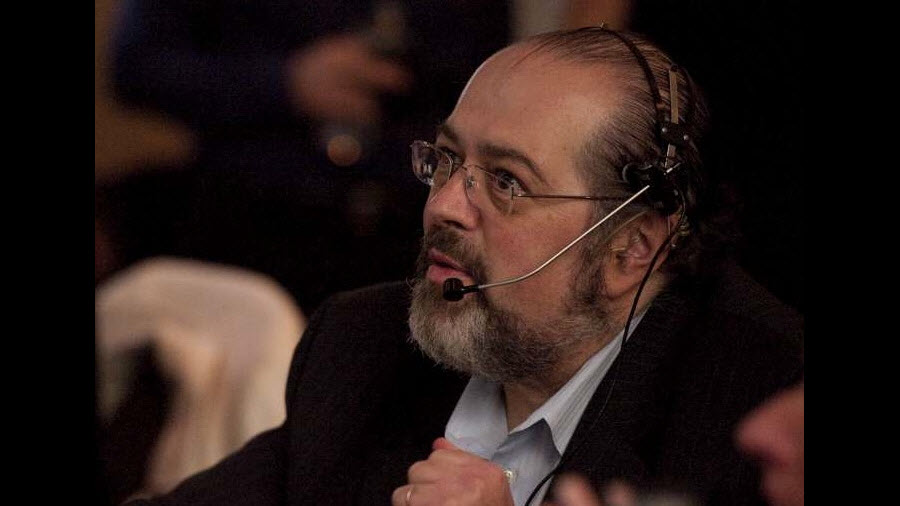Political Voices Network to Go OTT
David Bohrman built his career on the foundation of the traditional TV model, but his newest venture will steer decidedly clear of that.

His new left-leaning network, called Political Voices Network, will go over-the-top, delivering its content direct to consumers via internet-fueled mobile apps and web browsers, as well as TV-connected devices such as Apple TV and Amazon Fire TV devices, Roku players and Roku TVs.
Though he isn’t completely ruling out the idea of carriage deals with pay TV operators, Bohrman believes that the path of least resistance is going direct to the viewer.
“We are going around cable intentionally,” Bohrman, Political Voices Network’s president and CEO, said last month in Denver at a cable technology-focused event hosted by Light Reading.
“I’ve been in the broadcast and cable world, and I’ve run into, for decades, the golden handcuffs that come with affiliates and MSOs,” Bohrman said in an interview.
Bohrman, an award-winning journalist and executive whose orbit has circled the world of political TV for more than 30 years, speaks from experience. During his career, he’s served as producer and executive producer at ABC News, with similar roles at NBC News, CNN (where he served as chief innovation officer for a time) and Pseudo (a programmer that was early to the OTT distribution game); he was also president of Current TV, the political news channel sold to Al Jazeera Media Network in 2013.
Recalling his time at Current TV, Bohrman noted that the network had to operate under tight constraints that greatly limited its ability to distribute content via the internet. Limitations placed on digital distribution, he said, were a source of frustration for many who were there.
Multichannel Newsletter
The smarter way to stay on top of the multichannel video marketplace. Sign up below.
Under the OTT model, he said, he’ll have much more freedom regarding how Political Voices Network is distributed to consumers and how it is monetized.
He also believes that his new channel, still in the making, will fill a gap in the world of political TV that has seen coverage and focus become increasingly polarized between the right and the left during Donald Trump’s campaign and presidency.
“This current administration is transformative,” Bohrman said. “It has transformed Washington, it has transformed politics … and it’s transformed media. Media’s different now than it was. And it will leave a mark.”
He said the political right is “fertile and aggressive and prolific in various media zones,” citing examples such as Fox News Channel and TheBlaze, Glenn Beck’s conservative news network.
“It really struck me that there’s this huge gap in the media spectrum [that’s] left of center, and certainly left of Trump,” he said, holding that, save for MSNBC’s primetime slate, “the left has failed to make a mark in media of any significance.”
That perceived gap, he said, provides an opportunity for a new network that can connect to what he views as millions of disaffected voters.
Building a Better Lineup
Bohrman is still building out a programming lineup for Political Voices Network, but a focus will be video simulcasts of satellite radio shows that are already distributed by SiriusXM Radio. At this stage, he has announced agreements to offer video simulcasts of shows hosted by Stephanie Miller and Bill Press.
Bohrman said he can do this because SiriusXM doesn’t own the rights to the video simulcasts of those programs; he sees their distribution on satellite radio as a “big plus” for his new network.
“It’s a pretty successful format,” he said, pointing to examples such as The Dan Patrick Show on NBCSN. Decades earlier, Bohrman helped get the video simulcast of Don Imus’s radio show onto MSNBC.
In addition to building a strategy and a programming foundation that will include both live and on-demand programming, Bohrman is also trying to raise more money to get Political Voices Network off the ground and to boost the video production value of the satellite radio shows that will be simulcast.
If he’s successful, he believes the network will be up and running in time to be “part of the conversation” for the 2018 midterm elections.
“When we hit our investment goal, it’s probably 90 to 120 days before we can fully launch,” Bohrman said.
Though he’d like to spruce up the TV-facing elements of those radio shows, he doesn’t want to overdo it and take away from the nature of what has made those offerings successful in satellite radio.
“I don’t want to overproduce it, and turn it into a television program,” he said. “It’s the kiss of death. Let it keep that organic, natural feel, and have [viewers] feel like they are in the studio with the host. I think that’s a much more interesting experience.”
Under the current business plan, Political Voices Network is targeting a service that runs $10 per month with limited advertising. Bohrman said the numbers show that the network can be a “really good business” at 25,000 subscribers, and become cash-flow positive before getting to 50,000.
On the technology end, Political Voices Network has teamed with Zype to handle the transcoding and streaming and storage of the video assets, including full shows and clips.
Though direct-to-consumer OTT distribution is the primary focus, he’s not completely shunning the idea of working with multichannel video programming distributors, including virtual, internet-delivered multichannel offerings, so long as the price is right and there’s lots of flexibility on how viewers can obtain the programming.
“We’re not closing the door to it,” he said. “We just want to make sure we don’t shoot ourselves in the foot, but I can imagine a business relationships where it makes sense for us to license our content. But I want to make sure that everyone can have a completely portable experience.”
